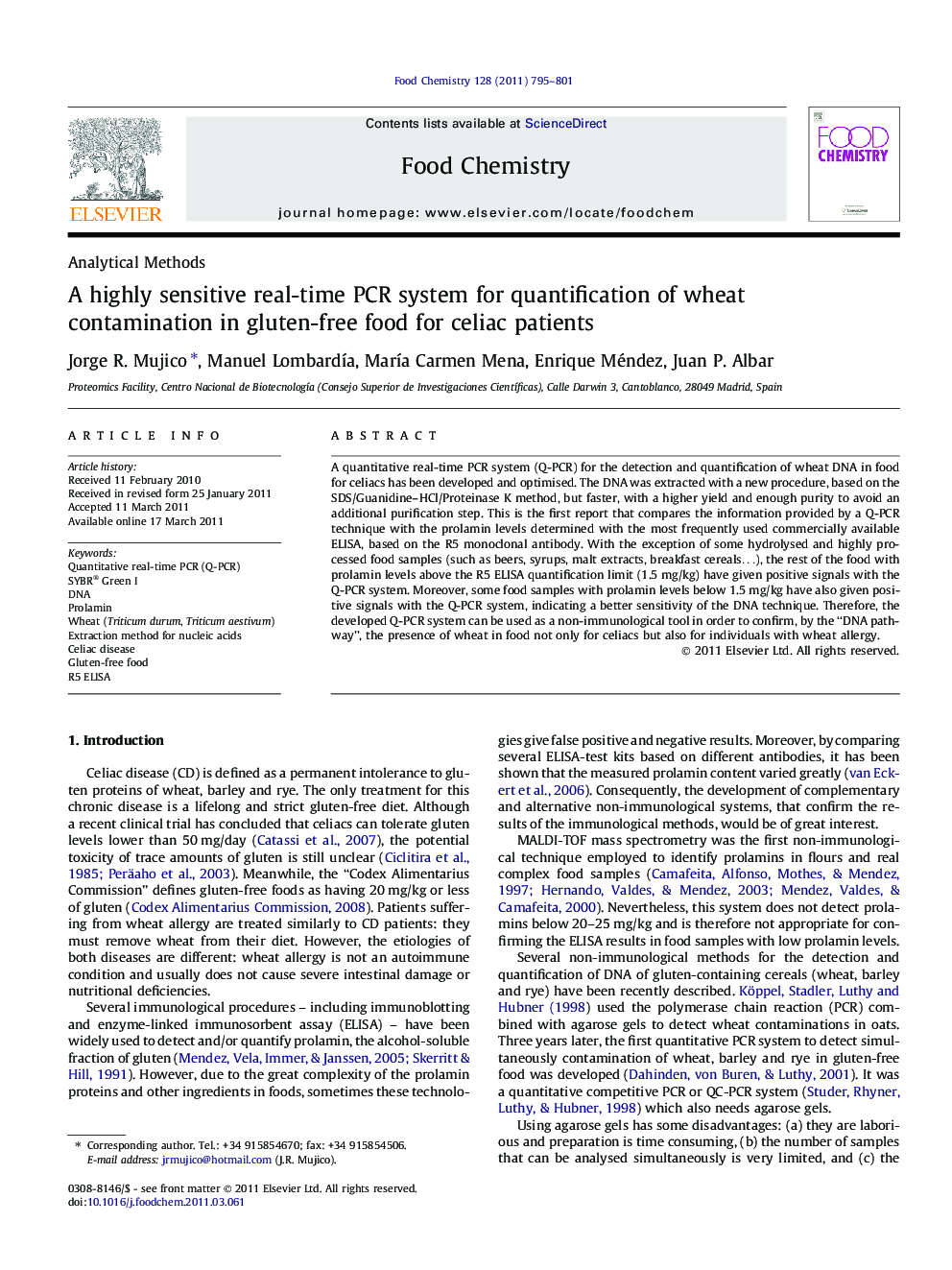| کد مقاله | کد نشریه | سال انتشار | مقاله انگلیسی | نسخه تمام متن |
|---|---|---|---|---|
| 1187047 | 963454 | 2011 | 7 صفحه PDF | دانلود رایگان |

A quantitative real-time PCR system (Q-PCR) for the detection and quantification of wheat DNA in food for celiacs has been developed and optimised. The DNA was extracted with a new procedure, based on the SDS/Guanidine–HCl/Proteinase K method, but faster, with a higher yield and enough purity to avoid an additional purification step. This is the first report that compares the information provided by a Q-PCR technique with the prolamin levels determined with the most frequently used commercially available ELISA, based on the R5 monoclonal antibody. With the exception of some hydrolysed and highly processed food samples (such as beers, syrups, malt extracts, breakfast cereals…), the rest of the food with prolamin levels above the R5 ELISA quantification limit (1.5 mg/kg) have given positive signals with the Q-PCR system. Moreover, some food samples with prolamin levels below 1.5 mg/kg have also given positive signals with the Q-PCR system, indicating a better sensitivity of the DNA technique. Therefore, the developed Q-PCR system can be used as a non-immunological tool in order to confirm, by the “DNA pathway”, the presence of wheat in food not only for celiacs but also for individuals with wheat allergy.
► Q-PCR for quantification of wheat DNA in food for celiacs has been developed.
► Values obtained from Q-PCR and R5 ELISA were compared for the first time.
► The majority of samples positive with R5 ELISA gave also positive with Q-PCR.
► With some samples, a better sensitivity of the DNA technique was observed.
► Q-PCR can be used as a non-immunological tool to confirm the presence of wheat.
Journal: Food Chemistry - Volume 128, Issue 3, 1 October 2011, Pages 795–801